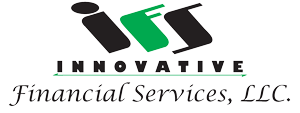| It’s May and we are almost half way through the year! We hope that everyone is stay safe and healthy during this crisis. We are working hard to continue to help guide our clients during this time. The SBA will be taking an aggressive approach towards monitoring and enforcing economic assistance and loan programs passed in the CARES Act. Businesses should be maintaining records of all transactions, losses, reductions in cash reserves, loss of customers, and decline in business operations. Below are some helpful information about the PPP loans, health insurance, and what you need to know if you currently have QuickBooks Desktop 2017 and the 5 signs that your software needs upgraded. If you are in need of more guidance, please reach out to us and we are happy to help. Laurie O’Neil Owner, Innovative Financial Services LLC Informative Articles: Support for QuickBooks Desktop 2017 in 2020- What you should know QuickBooks Online- New Features and Improvements Recording: Simply Insured COVID-19 Health Insurance Resource Center Borrower’s Guide to PPP Loans Important Notice from IRS Regarding PPP and Deductibles More Important Information Employer Retention Credit (ERC) The ERC is available to employers who did not receive or repay a Payroll Protection Program (PPP) loan by May 14, 2020 (in accordance to the safe harbor certification concerning need for a PPP loan) or Small Business Interruption Loans. It is also available to employers who receive both the paid family and medical leave, as long as it is applied to wages not covered by the ERC. This credit applies to wages paid after March 12, 2020, and before January 1, 2021. The ERC provides a refundable payroll tax credit for 50% of wages (capped at $10,000) paid by eligible employers during the COVID-19 pandemic. The maximum credit for an eligible employer for qualified wages paid to any employee is $5,000. The ERC is available to employers, including nonprofit organizations, with operations that have been fully or partially suspended as a result of a government order limiting commerce, travel, or group meetings. The tax credit is also provided to employers who have experienced a greater than 50% reduction in quarterly receipts, measured on a year-over-year basis. The term “wages” also includes health insurance. For employers with an average number of full-time employees of 100 or fewer in 2019, all employee wages are eligible, regardless if the employee is furloughed. For employers with a larger average number of employees, only the wages of employees who are furloughed or face reduced hours are eligible for the credit. Qualified wages may not exceed what the employee would have been paid during the 30 days before the economic hardship. Delayed Payment of Payroll Taxes The CARES Act allows employers to defer paying the employer’s portion of Social Security taxes that normally would be deposited from March 27, 2020 through December 31, 2020. All 2020 deferred amounts are due in two equal installments (50% each) on December 31, 2021 and December 31, 2022. Employers that receive PPP loans, may not defer payments and deposits of the employer’s portion of Social Security taxes due on or after the loan is partially or fully forgiven. The deferred amounts are due in two equal installments (50% each) on December 31, 2021 and December 31, 2022. For self-employed individuals, the legislation applies to 50% of certain self-employment taxes. 5 Signs You Need to Upgrade Your Accounting Software To maximize profits in your business, all of your business functions need to run smoothly, including your accounting department. Your accounting system is at the core of your accounting function. If it is old or lacks the features you need, your business may suffer. Here are five warning signs you can look for to determine if it’s time to upgrade or replace your current accounting system with something more cost-effective. Not Enough Users If your current system limits the number of users you can have in the system at any one time, this could be a major enough reason in itself to switch to a larger option. Luckily, most accounting software companies include an accountant user for free, so at least this type of user doesn’t have to count toward your total requirements. If you’re not sure how many users you currently have a license for, we can help you check on that. It might be as easy as buying more licenses if you’re not at the maximum capacity. But if you are at maximum, it may be time to look for a better accounting system with room for you and your business to grow. Outdated If your accounting system runs on desktop-based software that’s upgraded every year and you have not paid for or installed the upgrades, then your system is outdated. If it’s been sunsetted, that means the software vendor no longer supports the software. You are at major risk for the software crashing, getting buggy, getting hacked, or worse, permanently breaking. The cost of getting the system current may be better spent looking for a new alternative, or moving to a cloud-based system where updates occur automatically. Lack of Functionality or Scale It is commonly the case that your business has grown so much that it’s outgrown your original accounting solution. That’s good news! It’s time to find a solution that will scale better for your business. You might be missing important features that are costing you more time and money than if you were on a system that offered those features. Common time-wasting activities in accounting include too much time spent on data entry and/or Excel spreadsheets to make up for what the accounting system can’t do. Lack of reporting and analytics If you’re unable to receive the reports and analytics you want to run your business better from your current accounting system, it may be time to switch. With better data comes better decision-making and if lack of data is costing you money, then it’s time to find a more robust system. Lack of Integrations Thousands of apps exist to expand accounting systems’ core functionality. If your current accounting system lacks integration capabilities or does not have apps that are built to integrate with it, you may be missing out on additional functionality. This include mobile apps; it’s quite common now to do much of your accounting work from your mobile phone. Does your current accounting system have any of these red flags? If so, please reach out. We can help you find a best fit for your accounting needs. |

